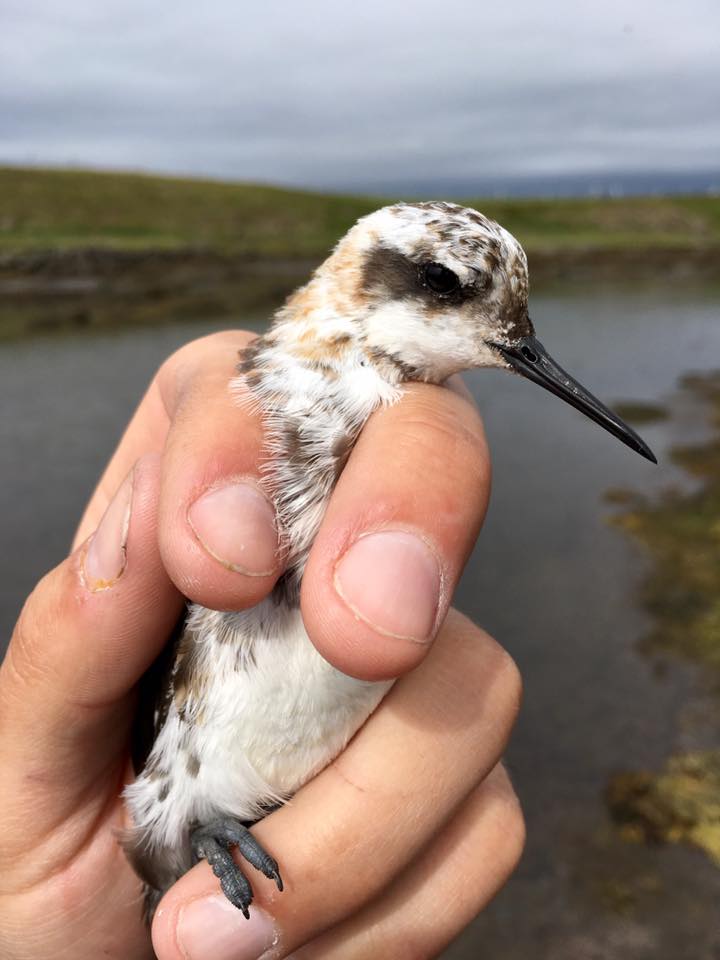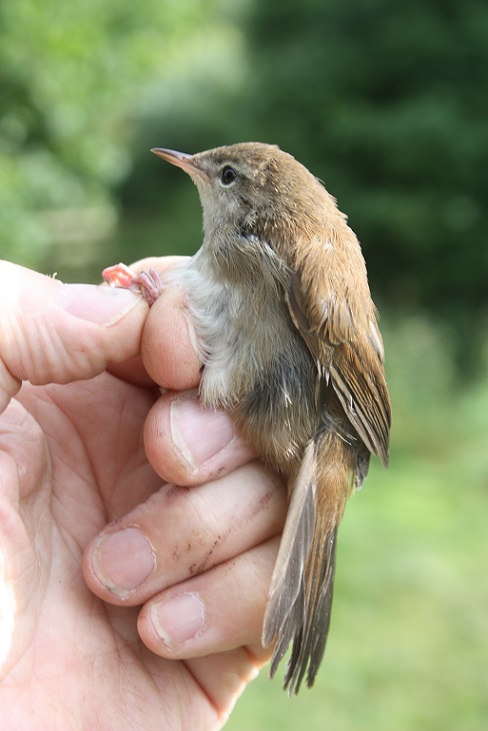CES 9: Lower Moor Farm, Friday, 29th July 2016
With Jonny back from making me jealous in Iceland, he joined me to run CES 9 this Friday. The weather was weird. Although the forecast was for it to be dry all morning, with rain setting in at lunchtime, we arrived to damp conditions, which barely lifted all morning. It wasn't raining, as such, otherwise we would not have opened the nets, it was more like the water was in suspension in the atmosphere. Every now and again the sun poked its way through and, when the breeze got up about 10:30, it became clear and dry. Apart from the dampness, they were almost perfect conditions for ringing. The rain never arrived.
The session was pleasantly busy, with regular small catches of birds throughout the morning. Our list was: Kingfisher 1; Treecreeper 2(1); Blue Tit 3(3); Great Tit 3(2); Long-tailed Tit (1); Wren 2(1); Dunnock 1(1); Robin 1; Blackbird 7; Reed Warbler 2; Sedge Warbler 2; Blackcap 8(2); Whitethroat 1; Lesser Whitethroat 1; Chiffchaff 7(2); Willow Warbler 6; Goldfinch 2; Bullfinch (1). Totals: 49 ringed from 16 species; 14 retrapped from 9 species; making 63 processed from 18 species. The only adult birds caught this session were one each of Great Tit, Long-tailed Tit, Reed Warbler and Bullfinch; two each of Blackbird and Goldfinch and four Blackcaps. All others were juveniles. This catch was 11 birds fewer than the equivalent session last year. The primary difference seems to be, apart from the missing titmice, that the Garden Warblers have already left the site.
There were several highlights: not least a brood of four newly fledged Blackbirds and the male parent, all caught in the same net within 15 minutes of each other. The first was much less well-developed than the others, with its primaries all clearly still in pin at the base, and being some 20mm shorter than his nest mates and father. How can I be sure it was his father? Whilst the youngster was in the net this male, with a distinctive bald patch around the eye, was hopping around the willow carr calling to the youngster. Once I had extracted the fledgling and taken it away for processing, I returned it to the area where it was caught, so that it was in familiar territory. What was clearly the same male, with the three other fledglings, were sitting in the net ready for extracting and processing, so I am pretty confident that they were a family group. The juvenile male Kingfisher was our fifth one ringed this year, which is one more than in the whole of last year. Always a pleasure and, as we had an audience when Jonny brought it back to the ringing station, a great bird to encourage people to listen to and understand the value of ringing. Catching more Sedge and Reed Warblers, particularly juveniles, was very encouraging: not to mention the juvenile Whitethroat, Lesser Whitethroat and six juvenile Willow Warblers.
Willow Warbler:

Of course, rearing young is an energetic and costly process for the birds involved, as the following photograph of an adult male Great Tit shows:

It is perfectly healthy, just well into its post-breeding moult, and not looking his best. ST / JC





 ST/EJ
ST/EJ







